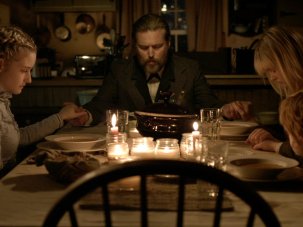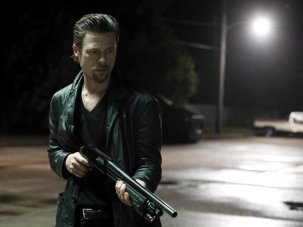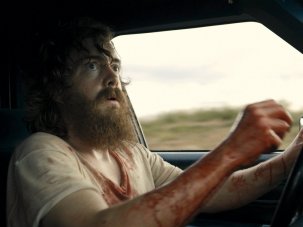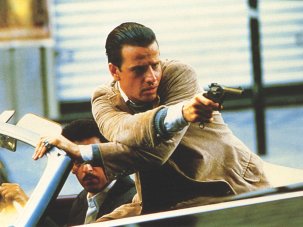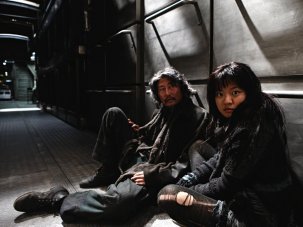from our July 2014 issue
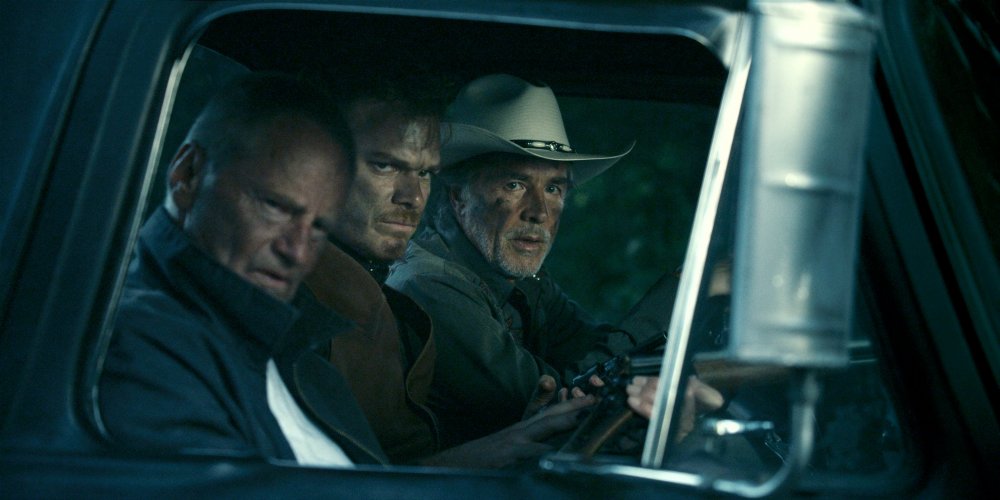
Cold in July (2013)
Spoiler alert: this review reveals a plot twist
Perhaps it’s because of changing platforms, or the popularity of serial television dramas, or just an inevitable return to the New Hollywood ethic, but it seems that an increasing number of American independent films can’t get financed or exist outside the festival circuit unless they’re explicitly ‘genre pictures’. (Seven years passed before Jim Jarmusch’s Only Lovers Left Alive found funding, which probably means that the runaway success of Nicolas Winding Refn’s Drive, not the Twilight franchise, was a motivating factor.) While this trend is undoubtedly frustrating to the stateside filmmaker who aspires to be a Tsai Ming-liang rather than a John Carpenter, some recent standouts – David Gordon Green’s Joe, Jeremy Saulnier’s Blue Ruin and now Jim Mickle’s Cold in July – don’t simply reference existing tropes as part of a checklist, engage in cloying self-awareness or offer up knee-jerk revisionism and ‘twists’.
USA/France 2013
Certificate 15 109m 58s
Director Jim Mickle
Cast
Richard Dane Michael C. Hall
Ben Russell Sam Shepard
Ann Dane Vinessa Shaw
Lieutenant Ray Price Nick Damici
Freddy Russell Wyatt Russell
Jim Bob Luke Don Johnson
In Colour
[2.35:1]
Distributor Icon Film Distribution
UK release date 27 June 2014
► Trailer
Cold in July is the most likely to draw comparisons to Drive, because of its source material, time period, synth score, sudden tonal shifts and violence. However, the deftness with which it traverses (or sometimes only suggests) different genres and social commentary and refuses easy closure is closer to Korean New Wavers such as Kim Jeewoon or Bong Joonho than to Refn’s shallow exercise.
The incident that kicks off the film is an NRA wet dream: when Richard Dane (Michael C. Hall) fatally shoots an unarmed burglar after his “finger slipped”, his actions are dismissed as self-defence because of the dead man’s long criminal record. Richard is treated like an effeminate milquetoast for having any moral quandaries about the killing: Lieutenant Price (played with cheery condescension by co-screenwriter Nick Damici) expresses surprise that he had the strength to pull the trigger at all; the local paper writes up the story as though Richard has performed a public service.
Although Richard’s uneasiness in the days afterwards clearly hints at post-traumatic stress, this is East Texas in 1989, so his feelings are sublimated by beer, a new home-security system, bars on the windows and a trip to the furniture store with his nagging wife to replace their blood-soaked couch. Death and its gory aftermath turn out to be totally banal in suburbia, not just on TV; Richard and his wife clean up the gallons of blood and bullet holes in their living room to the backing of James Carr’s ‘Forgetting You’.
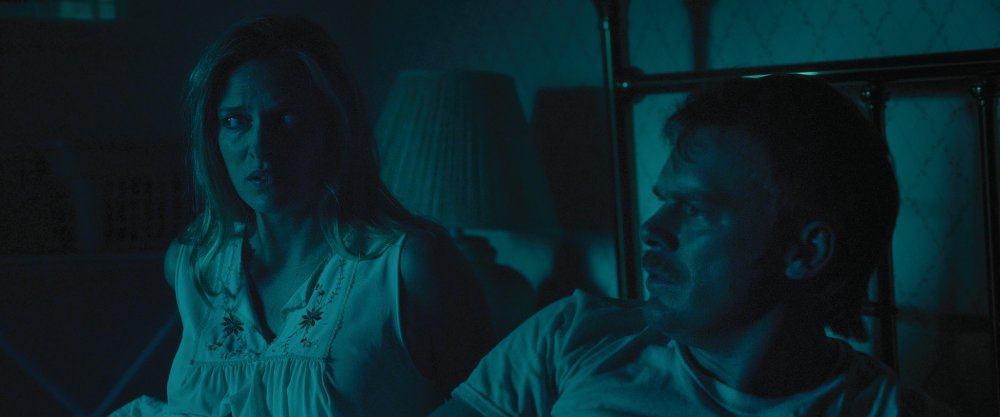
Cold in July (2013)
When Richard falls foul of his victim’s father Ben (Sam Shepard) at the funeral, the film takes a sudden turn towards 80s slasher movie: Ben is an ex-con imbued with a quasi-supernatural, Michael Myers-like ability to appear, menace Richard’s son and then disappear into thin air. The police’s de rigueur ineptitude sets the stage for total war, transforming Richard’s simmering anxiety into furious anticipatory terror. (Mickle and Damici’s previous trio of progressively more impressive horror films have honed their aptitude for playing with horror semantics and heightening tension.)
The cycle of either snapping at his family because of the stress or helping them avoid sudden death is broken when Price informs Richard over the phone that Ben is headed back to jail indefinitely. Richard, in giddy anticipation of closing the book on this case forever, speeds towards the precinct in his wood-panelled station wagon, blasting some upbeat hair metal. But as he’s wrapping things up at the station, he notices an old wanted poster for Ben’s son and realises – despite Price’s protestations that he’s being hysterical – this wasn’t the man he killed in his living room.
As demonstrated first by his appearance and apology at the funeral of Ben’s ‘son’, and later when he saves Ben’s life, Richard has a desire to “make things right”. However, his dogged pursuit of the truth – as the film becomes a southern-fried detective tale – slowly slides into behaviour that’s baldly selfish. After he forges an alliance with Ben and Ben’s old war buddy and private detective Jim Bob (Don Johnson), Richard spends less and less time with his family. (At a certain point, he convinces his wife he’s going on an extended business trip, a lie made even more ridiculous by the fact that he owns a small framing shop.) The macho camaraderie of these older men is a vacation from his responsibilities and timid existence; sitting alongside them on the porch of Jim Bob’s pig farm, drinking beers and staring at nothing, he’s simultaneously with them and enjoying a type of voyeurism that teenagers often do when with older, cooler people.
As Richard’s recklessness increases, Ben becomes grounded and humanised as he feels the regret of never being there for his son. Regardless of whatever mood it’s pursuing, Cold in July is always about fathers and sons, absent or present – sometimes even before we realise it, as when Richard uses his deceased father’s gun to shoot the intruder. But more than just encouraging us to identify with him, the film begins to mimic Ben’s character, not Richard’s: the silences are heavier and more frequent, and the violence becomes banal again, albeit tinged with a code of honour.
With the arrival of the swaggering, larger-than-life Jim Bob, first introduced driving a red muscle car a mile long, the tone is set for the conclusion, which mixes elements of Paul Schrader’s Hardcore (1979) with a shootout that’s pure wish-fulfilment. It unfolds like a revised version of the Alamo, where this time America triumphs with a total bloodbath, and its action-film heights are tinged with sadness even though the ‘good guys’ survive. This is perhaps the only time the film is grindingly predictable but it also completes the circle, returning us to where we started. We can only imagine future events, negative or positive, that might temper the Capra-esque normalcy as the credits roll.
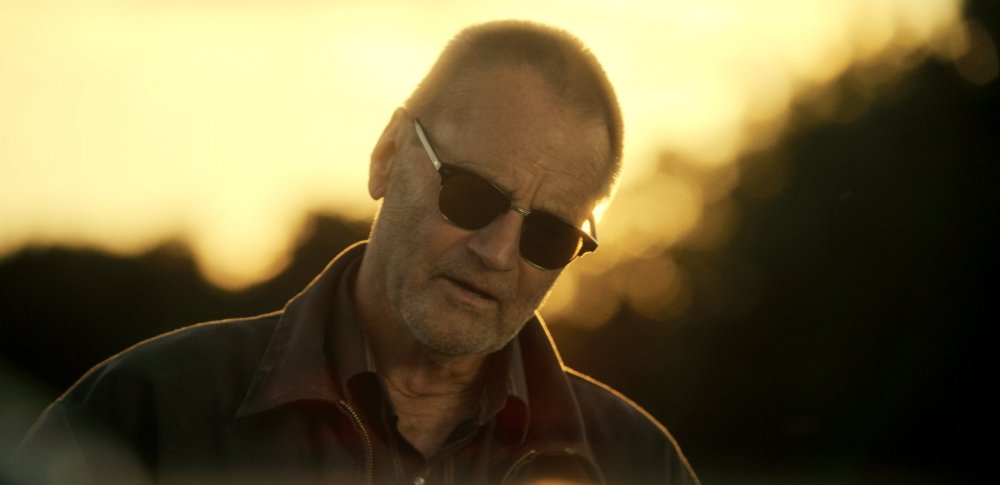
Cold in July (2013)
Though the sudden shifts in tone were in Joe R. Lansdale’s original crime novel, it’s really the strength of Mickle and Damici’s script that makes Cold in July lean and consistently tense rather than verbose and confusing. (Richard Kelly’s disastrous 2006 film Southland Tales springs to mind as a classic example of what not to do when genre-bending.)
Of course, this accomplishment is helped by fantastic performances from Hall, Shepard and Johnson. Hall could easily have fallen prey to playing Richard as priggish or a blank slate, but instead imbues him with a weariness that comes through even in moments of anxiety or foolhardy curiosity. (Maybe he really did deserve that vacation from his family.)
Shepard and Johnson are in a class of their own, with a flawless rhythm that allows the two men to move between chest-thumping displays of masculinity and petty bickering. While the meat of Shepard’s role gives the otherwise typecast playwright something to sink his teeth into, Johnson’s role harks back to his 80s heyday as Sonny Crockett. Aside from the Texas-sized bravura and colour-coordinated country wear, a wordless, extended scene of him coolly driving at night (powered by Jeff Grace’s thumping synths) clearly references Crockett’s sullen ‘In the Air Tonight’ moment in the Miami Vice pilot, if not the show’s overarching love for quasi-music video sequences.
When not obliquely referencing other films or genre conventions, Mickle demonstrates a keen ability to compose a shot and hold it. Even simple establishing shots – Richard watching TV with his family, suburban street corners or the rickety barns of Jim Bob’s pig farm in the early morning – are given a beauty usually not afforded this kind of American iconography. Cinematographer Ryan Samul also keeps pace, equally comfortable using naturalistic tones and stagey, unmotivated light sources when consistent with genre. (Close to the shootout’s climax, blood is sprayed on a ceiling fixture, bathing the room in an eerie cherry red.)
This impressive work leaves little to be desired, except a decent female character.
-
Sight & Sound: the July 2014 issue

Amma Asante on race, costume drama and Belle, Bruno Dumont on Juliette Binoche and Camille Claudel, Jane Campion on Cannes, Chinese classic Spring...
-
The Digital Edition and Archive quick link
Log in here to your digital edition and archive subscription, take a look at the packages on offer and buy a subscription.




